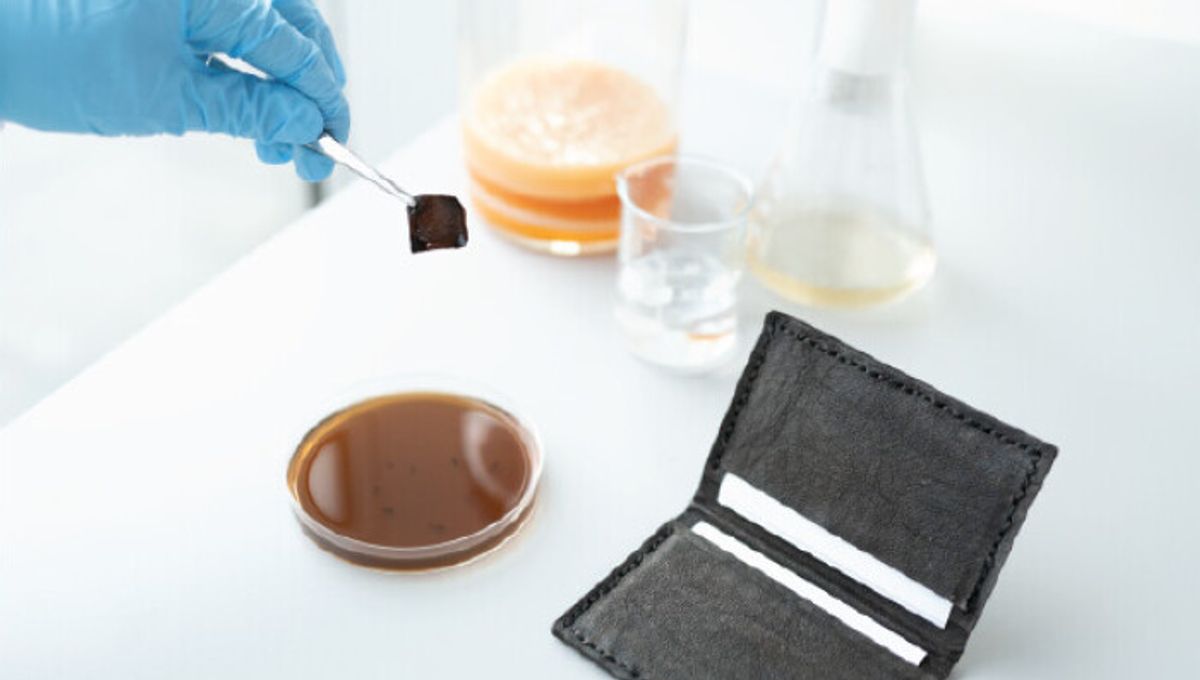Just like many other materials used in clothing production, leather has a significant environmental impact. This has led researchers to search for more sustainable alternatives. One of the most promising options is bacterial cellulose, produced by specific bacteria from the Komagataeibacter genus.
These tiny organisms secrete linear chains of glucose that form a robust mesh of fibers known as a pellicle. Not only do these pellicles make excellent textiles, but they can also be quickly produced from waste materials like rotten fruit, making them a low-impact environmental solution.

The concept of using bacterial cellulose as a leather substitute isn’t new. However, scientists have faced challenges in finding an eco-friendly way to add color to these materials. Synthetic chemical dyeing, especially the black pigments used for leather, is one of the most polluting processes in the fashion industry.
To overcome this hurdle, the researchers genetically modified a strain of Komagataeibacter to produce the enzyme tyrosinase. This enzyme triggers the formation of the black pigment eumelanin, which, due to its low water solubility, is an excellent candidate for a textile dye as it won’t run when washed.
Over a period of 14 days, the team cultivated bacterial cellulose in a shoe-shaped mold using their modified microbes. Gentle shaking stimulated the production of eumelanin, dyeing the material black from within. They also crafted a black wallet by cutting and stitching pellicle sheets secreted by the modified bacteria.
“Creating a new, faster method to produce sustainable, self-dyed leather alternatives is a significant achievement for synthetic biology and sustainable fashion,” said study author Professor Tom Ellis. “Bacterial cellulose is inherently vegan, and its growth requires a fraction of the carbon emissions, water, land use, and time compared to farming cows for leather,” he added.
“Unlike plastic-based leather alternatives, bacterial cellulose can be produced without petrochemicals and will biodegrade safely and non-toxically in the environment,” Ellis noted.
In an exciting development, the researchers found that the bacteria could be stimulated to produce pigments in response to blue light. This allowed them to add shapes and logos to pellicles simply by shining light on the desired patterns.
Looking ahead, the team believes it may be possible to engineer bacteria to produce other colors in a similar way, with pigments like indigo already synthesized by certain strains of E. coli.
“We’re excited to collaborate with the fashion industry to make our clothing greener throughout the entire production process,” Ellis stated.
The study has been published in the prestigious journal Nature Biotechnology.







